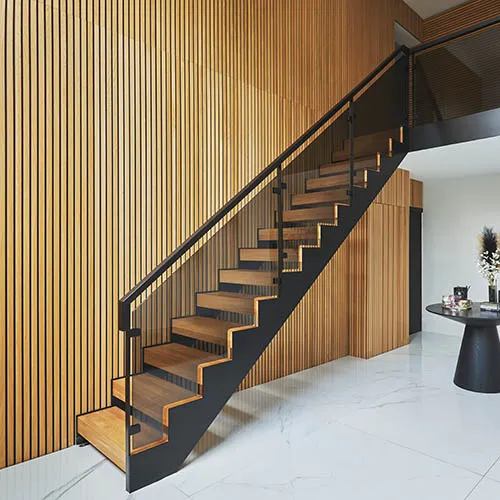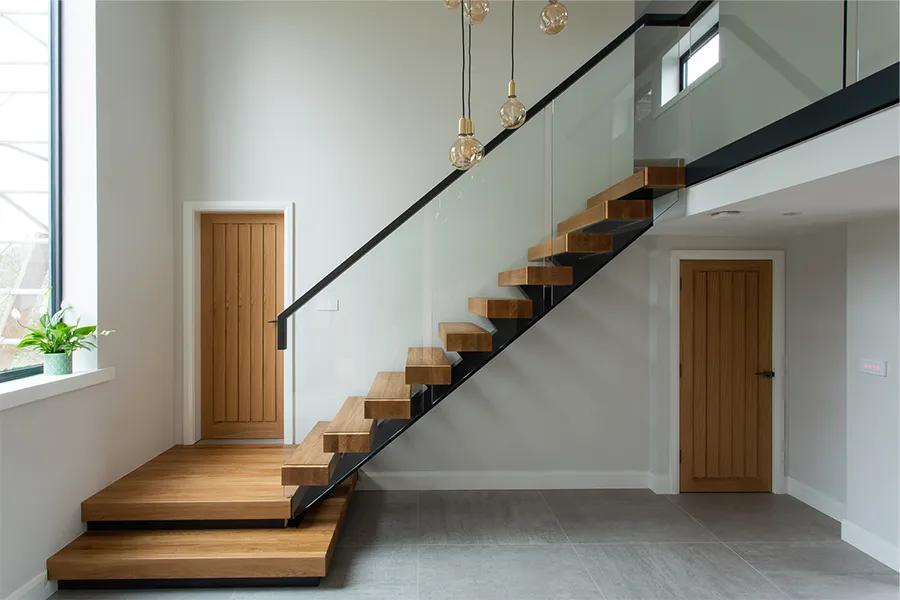So, you’ve decided that your next staircase is going to be something special, but you’re unsure of where to start your design? This guide will walk you through the three essential choices you’ll have to make that will shape the look, feel, and final cost of your dream stairs.
The 1, 2, 3s of designing new stairs
Unless your dog beats it to the punchline, your stairs are the first thing that says ‘Welcome home’ when you open your front door. It's the largest piece of furniture in your home, and the right stairs can make a serious statement about your eye for aesthetics and detail.
To ensure that your designer stairs end up being the right set of stairs for your home, you’ll need to consider the 1, 2, 3s of stair design:
- Open or closed-plan stairs
- Material choices
- Balustrade choices
With these three choices made, fabricators like First Step Designs can help you envision your dream stairs with the help of CAD designs.
Call the team today to discuss your ideas

Open Vs. Closed Plan Staircases
Choosing between an open or closed-plan (also known as open or closed riser) staircase will be the most significant factor in determining the overall impact of your new stairs on your home. There isn’t a right or wrong choice; only the choice that best suits your needs.
Open risers are typically associated with more modern designs. They prioritise light, space, and airiness, and work particularly well in open-plan or large rooms. When open-plan stairs run parallel to a hallway, they create a visual barrier that separates the space without blocking vision or sightlines. Glass or metal balustrades typically pair with open-plan stairs; however, this is not a strict design rule. When used in smaller homes or interiors, open-plan stairs can help the space feel more open and look larger.
What closed-plan or riser stairs lack in openness, they make up for in practicality. Typically built against a supporting wall, they offer plenty of additional storage space and can even accommodate an understair washroom if designed for that purpose.
Open-plan stairs tend to be a few percentage points more expensive to manufacture as they often require additional support; however, material choices will have a bigger impact on the final costs.
Choosing the right materials for your new stairs
Material choices will have the next biggest impact on the look, feel, and cost of your new stairs. For each structural element of the stairs, you’ll have to choose the right material based on how it complements the other materials, costs, durability, aesthetics, maintenance requirements, and more.
The most commonly used materials for the structural elements of new stairs include:
- Steel
- Wood
- Glass
- Aluminum
The structural components that need material choices include:
- Treads (Steps)
- Stringers (Side supports)
- Risers (Vertical boards between treads)
- Central Spine for floating stairs
- Newel posts (main structural posts)
- Landing platforms and winding turns
While combining different types of materials to create bespoke stairs is common, it’s important to remember that each material has its own qualities and drawbacks. Consulting with expert stair designers can help you get the most out of your material choices, resulting in stairs that best suit your needs, home, and budget.


Choosing the right balustrades
Balustrades are both functional and decorative elements. Their design, manufacturing complexity, and material choices make up the final piece of the new staircase puzzle. Balustrades can have a significant effect on the overall appearance of a new staircase, serving as a contrast or complement to the overall staircase design. A stud wall offers near complete privacy and the feeling of safety, whereas glass balustrades allow for maximum light to travel through the room, opening it up.
Three of the most common types of balustrades are classic wooden balustrades with turned or square balusters and wooden newel posts and handrails; modern glass balustrades with clear or frosted toughened glass balusters; and industrial-design metal balustrades in various different forms and finishes, from wrought iron to geometric brushed steel designs. Once again, there isn’t a best balustrade; there are only ones that fit or don’t fit your needs.
—
By forwarding images of stairs that you like, First Step Designs can help you identify and conceptualise different combinations of stair plans, materials, and balustrade options that fit your home.
Let’s talk
Get in touch and let us show you how we can transform your home.






















.jpg)


















